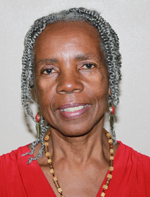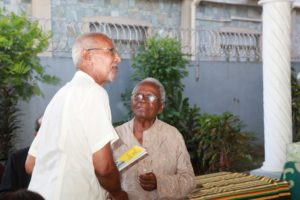By Petamber Persaud
There are as many ways to celebrate as there are appropriate ways to celebrate. The tenor of Black History Month should be celebrated with books especially with books on the history of places, peoples and events. Starting with books on places, here’s a glimpse of three villages.

The History of Victoria Village by William N. Arno, first published in 1966, reprinted by the Guyana Heritage Society 2000.
The book, ‘History of Victoria Village’, a slim publication, written by William N. Arno, tells the inspiring story of how a group of recently emancipated Africans pooled their resources together in order to make an unprecedented purchase of a sizable village on the East Coast of Demerara. The purchase was one aspect of that inspiring story. The other aspect was that those ‘intrepid’ ex-slaves were able draft rules and regulations to preserve their investment.
According to the book, in November of 1839, eighty three persons including two women bought what was then Plantation Northbrook for the sum of 30 thousand guilders ($10, 284, 63c.). It is mentioned here and in other places that two women were involved in that transaction but the list of names revealed there were more than two female who were involved.
Plaisance: From Emancipation to Independence and Beyond, by Beryl Adams-Haynes Georgetown, Guyana, July 2010.
The idea of writing a history on Plaisance came to the author some years after she re-migrated and discovered by chance that Plaisance was bought by emancipated Africans. The research stages were not easy; she moved from the national archives to the national library to sourcing information from London and the internet. It took some six years before it finally came to fruition.
The author said, ‘When I set out to write the history of Plaisance, I didn’t set out to do this [showing the book], I set out to write a few pages, a twenty-five-page document perhaps for my own satisfaction but it took on new dimensions and has taken off in way beyond my expectations’.

Some sixty-five persons were involved in the purchase.
To the Youths of Agricola by Muriel Doreen Branche and Jennifer Branche, published 2016.
This book is made up of thirteen chapters, an introduction and a biographical page on the two authors. The text is supported by illustrations and photographs. All of the above serving to unfold the history Agricola from birth to its rise and decline with the aim for redemption.
Agricola bounded by Houston to the north and Rome to the south started after the emancipation of enslaved Africans. The actually genesis is traced to a time when Richard Michael Jones, owner of Plantations Rome, Huston, La Bonne Mere and Hope, who was more liberal than other plantation owners sold plot of land to the freed Africans. The village was sometimes referred to as ‘Jonestown’ and at other times loosely called ‘Rome’. But the word Agricola comes from Latin meaning agriculture or farmer. Another origin story is offered that the village founders were enamored by ‘the feats of the Roman conqueror, Gnaeus Julius Agricola…who was instrumental in the Roman conquest of Britain’. This last explanation bears some credence because the streets bear the names outstanding characters in Roman History – Remus, Romulus, Caesar, Cato and Titus. The community spirit at the time was the hallmark for growth and sustained development.
Agricola was once a gated community when crime was ‘virtually non-existent’, when Agricola was a peaceful and a hospitable place ‘deemed to be suitable for entertaining and accommodating dignities’, with no lesser person than the governor of the colony staying in the ‘Great House’ while repairs were being effected to his official residence. Another claim of the book was that the founding fathers – John Figaro, Chandler and Hercules – were visionaries whose visions were supported by the members of the fledging community who were industrious and cooperative and whose industry produced newly dug canals and freshly built dams for the health and economic wellbeing of all. But with time, there were many changes, not all to the good, heralding a decline.
Responses to this author please telephone 226-0065 of email: oraltradition2002@yahoo.com (Guyana Times Sunday Magazine)



